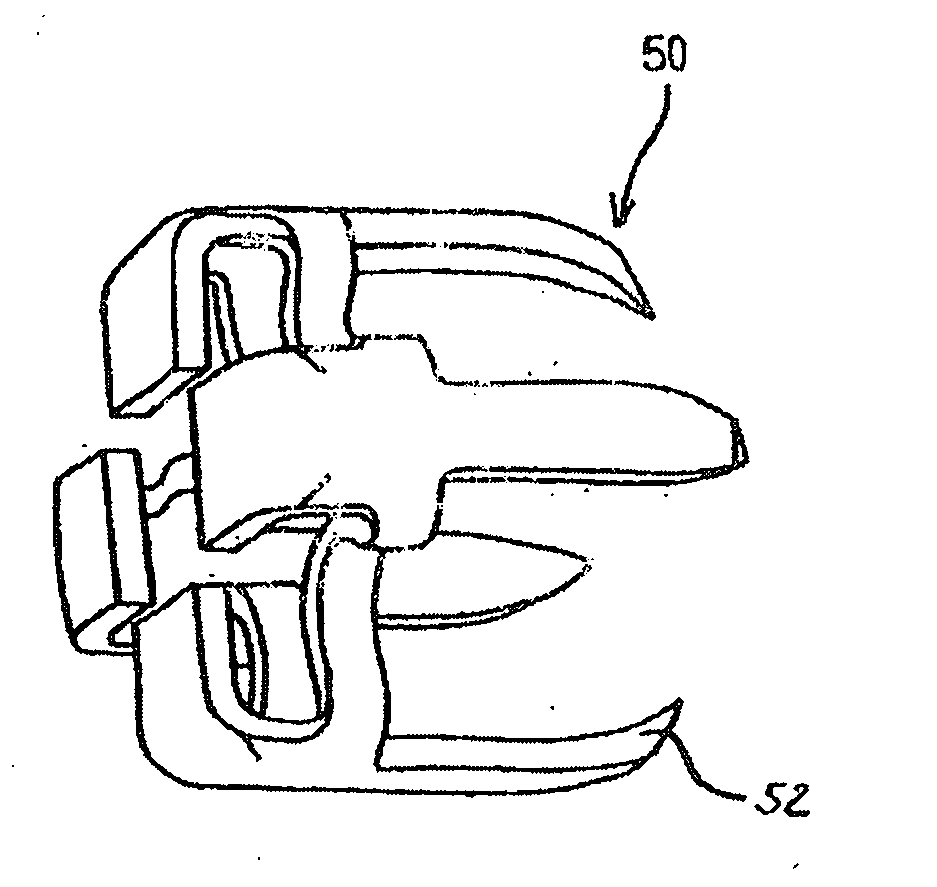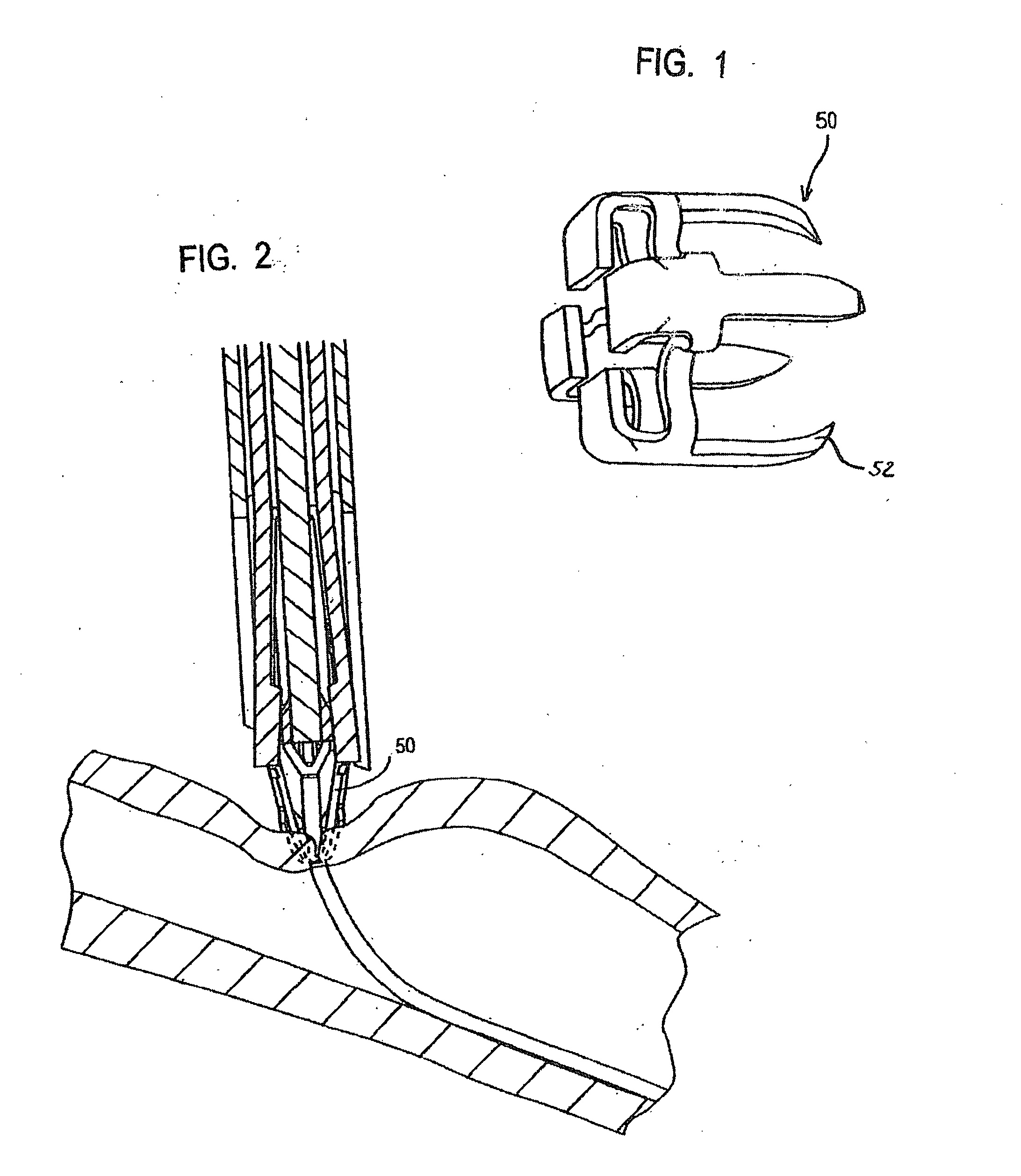Biodegradable and/or bioabsorbable member for vascular sealing
a bioabsorbable, vascular sealing technology, applied in the field of closing apertures, can solve the problems of reducing the risk of injury, increasing the risk of local complications such as hematoma, false aneurysms, local or systemic infections and/or acute vessel occlusion, and prolonging the critical care item of wound site management involving additional costs, so as to reduce the risk of injury
- Summary
- Abstract
- Description
- Claims
- Application Information
AI Technical Summary
Benefits of technology
Problems solved by technology
Method used
Image
Examples
example 1
[0040] A bioresorbable and / or biodegradable sealing member according to the invention can be made from an alloy containing zinc as the component A and calcium as the component B. The weight ratio that zinc bears to calcium amounts to 25 / 1. This Zn—Ca alloy forms soluble salts as degradation products, such as calcium hydroxide which possesses such a high solubility that the solubility product is not transgressed during slow decomposition over several weeks or months. This hydroxide is transported in dissolved form by interstitial fluids or blood and is metabolized.
[0041] To improve the mechanical properties of the sealing member, such as ductility, hardness and tensile strength, suitable alloy constituents can be added in low concentrations. For instance, phosphorus may be added to the alloy in an amount of the order of a few percents.
example 2
[0042] A bioresorbable and / or biodegradable metal sealing member acting as a local electrochemical device according to the invention can comprise a support body and a local electrode. The support body is made of substantially pure zinc which dissolves—as electroplating tests show—without production of gases and without the formation of oxide at currents of some milliamps. The local electrode is made of gold and is in contact with the zinc support body. This local gold electrode is fixed onto the sealing support body by electroplating or by laser welding. The contact between the zinc support body and the local gold electrode produces a contact voltage and a resulting current that leads to active degradation of the sealing member. The exchange current as a whole is determined by the size of the gold electrode. The degradation rate and thus the decomposition rate of the sealing member can be adjusted by the size of the local gold electrode.
[0043] Tests have shown that an exchange curr...
example 3
[0044] A bioresorbable metal sealing member according to the invention can be made form a ZnTi alloy with a Ti weight percentage of 0.10% to 10%. In a further improved embodiment of this example, a precious metal in the form of gold can be added at a weight percentage of 0.10% to 20%, the Ti weight percentage remaining unchanged so that the member consists of a ZnAuTi alloy. These two alloys also exhibit a biocompatible decomposition behavior and are thus regarded as bioresorbable sealing members.
PUM
 Login to View More
Login to View More Abstract
Description
Claims
Application Information
 Login to View More
Login to View More - R&D
- Intellectual Property
- Life Sciences
- Materials
- Tech Scout
- Unparalleled Data Quality
- Higher Quality Content
- 60% Fewer Hallucinations
Browse by: Latest US Patents, China's latest patents, Technical Efficacy Thesaurus, Application Domain, Technology Topic, Popular Technical Reports.
© 2025 PatSnap. All rights reserved.Legal|Privacy policy|Modern Slavery Act Transparency Statement|Sitemap|About US| Contact US: help@patsnap.com


